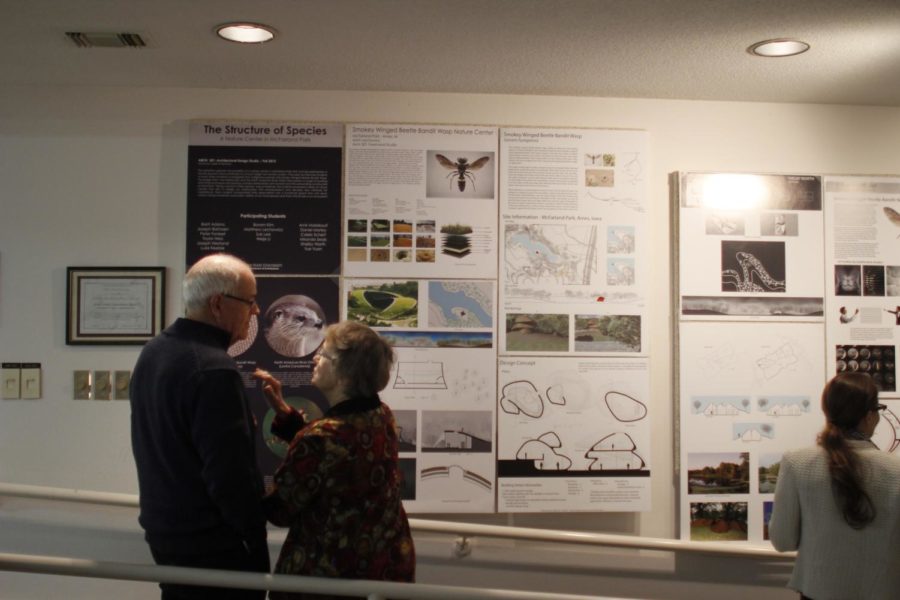Design students host ‘Structure of Species’ exhibition at McFarland Park
Attendees of the “Structures of Species” exhibition looked at students’ proposals. The exhibition took place Friday at McFarland Park.
November 15, 2015
Architecture students recently took on a project that challenged them to engage sight and nature in a meaningful way.
The third-year architecture studio, taught by Leslie Forehand, lecturer in architecture, observed four different species that can be found locally at McFarland Park.
After engaging with an employee of the park, 16 students individually designed spaces that would realign the human connection with North American river otters, smoky winged beetle bandit wasps, sedge wrens and Indiana bats.
Each of the species has what could be seen as an unstable relationship with humans, despite the benefits they may bring.
“Wasps are typically perceived as bad, but there has been this ongoing Iowa surveillance utilizing these specific wasps because they kill a beetle that kills all of the ash trees,” Forehand said.
The bats, sedge wrens and otters face habitat destruction by humans.
Students designed their spaces during the seven-week project with inspiration from both their species and other architects. The structure and location of the designs mimicked the way the species construct their habitats.
“[Students] looked at the species’ architecture, then found architecture building methodologies that aligned with that sort of building aesthetic,” Forehand said.
Brett Adams, senior in architecture, created his structure based on the wasps. The building mimicked the way wasps burrow in the ground to catch and store beetles.
“A lot of people incorporated the actual sanctuary in their building, very specifically, I did not do that,” Adams said.
The structures could be a haven for the species or simply be designed to represent the species’ building methods. Each student took the project in a different direction.
Joe Hiestand, junior in architecture, focused on the way the otters build their habitats when designing his structure.
“I kind of got inspired by the playfulness of the otter, the digging out that the otter does,” Hiestand said of his design.
The structure was designed to be near a lake similar to how an otter’s nest would be by water, and would be a learning space as well as a rehabilitation center for the otters.
Students displayed their proposals in a “Structure of Species” exhibition at McFarland Park on Friday.







